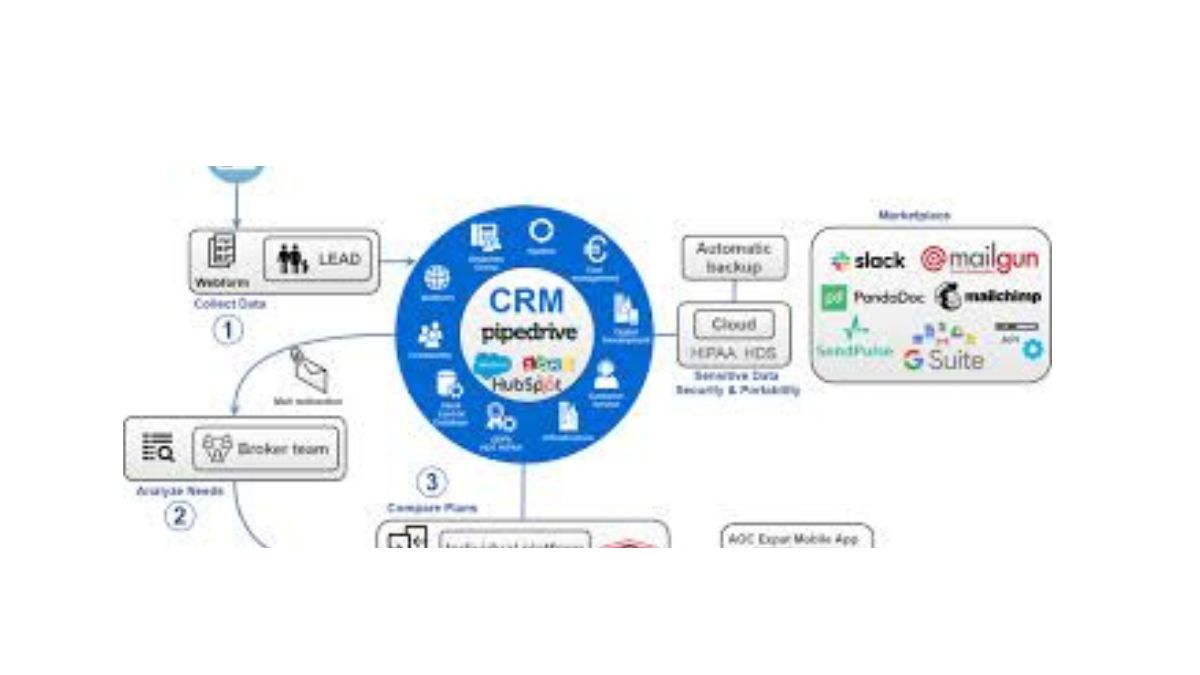FOOD
Sure! Here are seven engaging blog post titles related to the concept of a “retail food product

The world of retail food products is a dynamic and ever-evolving landscape. From gourmet snacks to organic staples, the choices are endless. As consumers become more discerning about what they eat, understanding this market becomes crucial for both producers and buyers alike. With the rise of online shopping and social media influence, navigating this vibrant space can be challenging yet rewarding. Whether you’re a passionate foodie or an entrepreneur looking to carve your niche, there’s plenty to explore in the realm of retail food products. Join us as we delve into trends, marketing strategies, and sustainability practices that define today’s bustling marketplace!
Understanding the Concept of a Retail Food Product
A retail food product refers to any edible item sold directly to consumers. This broad category includes everything from packaged snacks and beverages to fresh produce and frozen meals.
These products play a vital role in our daily lives, shaping our eating habits and culinary experiences. Quality, packaging, and convenience often dictate consumer choices.
Retail food products are not just about nutrition; they also cater to lifestyles. Health-conscious individuals seek organic or gluten-free options, while busy professionals may opt for ready-to-eat meals that save time without compromising on taste.
Understanding this concept requires recognizing the interplay between consumer preferences and market offerings. As tastes evolve, so too do the strategies retailers employ to capture attention in a crowded marketplace.
The Evolution of Retail Food Products: From Brick-and-Mortar to Online Stores
The retail food product landscape has transformed dramatically over the years. Once dominated by brick-and-mortar stores, consumers now enjoy a plethora of options at their fingertips.
In the past, shopping for groceries meant navigating crowded aisles and waiting in long lines. The tactile experience of picking items off shelves was essential to many shoppers. However, convenience soon took precedence.
With the rise of online shopping platforms, customers can browse thousands of products from home. They appreciate not only affordability but also accessibility to specialty items previously found only in select stores.
Mobile apps have further revolutionized this space. Shoppers can order groceries with just a few taps on their smartphones while enjoying curated recommendations based on preferences and dietary needs.
As technology continues to advance, the retail food product industry adapts rapidly to meet evolving consumer demands and desires.
How to Stand Out in the Competitive World of Retail Food Products
To make a mark in the retail food product landscape, innovation is key. Think outside the box when developing your offerings. Unique flavors or intriguing ingredient combinations can set you apart from competitors.
Branding plays a crucial role as well. Create packaging that not only grabs attention but also tells your brand story. A memorable logo and engaging design can foster loyalty among consumers.
Understanding your target audience is essential. Conduct market research to identify their preferences and pain points. Tailor your products to meet these needs while communicating effectively through social media platforms.
Sampling events are another fantastic way to gain visibility. Let potential customers taste what makes your product special; first-hand experience speaks volumes.
Don’t underestimate the power of collaborations too—partnering with local businesses can enhance credibility and broaden reach within the community, creating buzz around your brand without overwhelming marketing costs.
Rising Trends in Retail Food Products: What Consumers are Looking for in 2022
As we delve into 2022, consumer preferences in retail food products are evolving rapidly. Shoppers increasingly seek transparency and traceability in their food sources. They want to know where their ingredients come from and how they were produced.
Health is another key focus. Products that offer functional benefits—think immunity-boosting or gut health-enhancing options—are gaining traction. Individuals prioritize wellness, fueling a demand for items rich in nutrients.
Plant-based offerings continue to rise as consumers embrace more sustainable diets. Whether it’s meat alternatives or dairy-free options, plant-based products are reshaping traditional aisles.
Moreover, convenience remains paramount. Ready-to-eat meals and snackable formats cater to busy lifestyles while maintaining quality flavors.
Packaging plays an essential role too. Eco-friendly materials attract environmentally conscious consumers who value sustainability alongside taste and nutrition.
The Impact of Social Media on the Success of Retail Food Products
Social media has transformed the way consumers discover retail food products. Platforms like Instagram and TikTok allow brands to showcase enticing visuals that capture attention instantly. A beautifully plated dish or a unique product can go viral, driving traffic to online stores.
Engagement is crucial in this space. Brands that interact with their audience create loyal customers who feel valued. Responding to comments, sharing user-generated content, and hosting giveaways are effective strategies for fostering community.
Influencer partnerships also play a significant role. Collaborating with influencers who align with brand values can amplify reach significantly. Their authentic endorsements often lead to increased trust among potential buyers.
Additionally, social media provides valuable insights into consumer preferences through analytics tools. Understanding these trends helps businesses tailor their offerings accordingly and stay ahead of competitors in the ever-evolving market landscape.
From Farm to Table: The Importance of Sustainable and Ethical Practices in Retail Food Production
Sustainable and ethical practices are crucial in the realm of retail food products. They address not only environmental concerns but also consumer demand for transparency.
Farm-to-table initiatives connect local farmers with consumers. This relationship promotes fresh produce while reducing carbon footprints associated with long-distance transportation. When shoppers know where their food comes from, trust builds.
Ethical practices extend beyond sourcing ingredients. Fair labor conditions for workers ensure that everyone involved in production is treated justly. This accountability resonates with conscious consumers who prioritize values alongside quality.
The rise of organic farming highlights another aspect of sustainability. It encourages biodiversity and soil health, leading to more nutritious offerings on store shelves. As awareness grows, brands embracing these principles stand out in a crowded marketplace.
Prioritizing sustainable practices creates a positive cycle—benefiting producers, retailers, and consumers alike while fostering a healthier planet.
Expl
The retail food product landscape is continuously evolving. As consumers become more discerning, the demand for innovative and quality-driven products grows. Retailers must adapt to these changes while staying true to their core values.
Exploring new avenues for growth can lead to exciting opportunities in this competitive market. Brands that prioritize sustainability, ethical sourcing, and transparency will likely resonate with today’s conscious consumer.
As you navigate this dynamic field, remember that listening to your audience and responding to their needs is key. Staying informed about trends and harnessing the power of digital marketing can set your brand apart from the rest.
Embrace creativity and innovation as you develop your retail food products. The journey may be filled with challenges, but it also offers great rewards for those willing to invest time and effort into understanding what drives success in this ever-changing industry.
FOOD
Yaroa Magic Discovering the Heart of the Dominican Republic’s Comfort Food

Introduction
If there’s anything that can bring people together, it’s food. Every culture has its own unique dishes that tell a story about its history and lifestyle. The Dominican Republic, with its vibrant culture and diverse culinary heritage, offers a delightful array of flavors. Among these is a tantalizing street food treasure known as “yaroa.” This dish isn’t just food; it’s a cultural experience in every bite.
In this blog post, we’ll explore the world of yaroa. We’ll discover what makes it such a beloved staple in Dominican cuisine, its rich history, and how it has become a symbol of comfort for many. Whether you’re a food lover seeking new culinary adventures or someone interested in global flavors, this guide will give you a taste of what yaroa has to offer.
What is Yaroa?
Yaroa is a popular Dominican street food dish that combines layers of flavor and texture. At its core, yaroa is a hearty plate of French fries or plantains topped with a choice of meats and covered in melted cheese and sauces. It’s like a loaded nacho platter, but with a Caribbean twist.
This dish typically features shredded chicken, beef, or pork, adding a savory element to the fried base. The addition of cheese and sauces such as mayonnaise and ketchup creates a creamy, tangy finish that ties the dish together. What’s remarkable about yaroa is its adaptability; with each vendor, you might find a different version, making it a very personal and customizable food.
The Origins of Yaroa
While yaroa is now a beloved dish across the Dominican Republic, its origins can be traced back to the city of Santiago. It was here that street vendors first began selling this delicious concoction, quickly capturing the hearts and taste buds of locals and tourists alike.
The exact origin story of yaroa is somewhat of a mystery, but many believe it emerged in the late 20th century as a late-night snack. Its popularity spread rapidly due to its satisfying combination of carbs, protein, and fats—perfect for satiating late-night cravings. Yaroa’s rise to fame highlights the Dominican people’s ingenuity in creating something extraordinary from simple ingredients.
The Cultural Significance of Yaroa
Yaroa isn’t just a dish; it’s a cultural phenomenon. In the Dominican Republic, street food is a communal experience, and yaroa is often enjoyed with friends and family. It’s a dish that brings people together, creating moments of joy and connection over shared plates.
This dish also serves as a representation of Dominican resilience and creativity. By using readily available ingredients, yaroa embodies the resourcefulness of the people. Each bite is a testament to the country’s rich cultural tapestry and the way food can serve as a canvas for storytelling.
How to Make Traditional Yaroa
Creating your own yaroa at home is an exciting culinary adventure. To start, you’ll need the basic ingredients of French fries or fried plantains, your choice of meat, cheese, and a variety of sauces.
Begin by frying your base until it’s golden and crispy. Next, prepare your meat by seasoning and cooking it to perfection. Once these components are ready, layer them on a plate, top with a generous amount of cheese, and place under the broiler until the cheese is melted and bubbly. Finish with a drizzle of mayonnaise and ketchup for that classic yaroa taste.
Variations of Yaroa
While the traditional yaroa recipe remains a favorite, there are countless variations that reflect personal taste and regional influences. Some people prefer using sweet plantains instead of fries for a sweeter contrast to the savory toppings. Others might introduce exotic toppings like avocado, bacon, or jalapeños for added flavor.
Vegetarian and vegan versions have also gained popularity, substituting meat with beans or tofu while maintaining the same delicious essence. The beauty of yaroa lies in its versatility, allowing anyone to adapt it to their dietary preferences while still enjoying the authentic flavors.
Yaroa in Popular Culture
Yaroa’s impact extends beyond the kitchen. It has become a symbol of Dominican street food culture, celebrated in festivals and featured in travel guides. Media outlets often highlight yaroa as a must-try dish for visitors to the Dominican Republic, showcasing its importance in local cuisine.
In recent years, yaroa has made appearances in cooking shows and food documentaries, gaining international recognition. Its rise in popularity reflects a growing appreciation for global street foods and the cultural stories they carry.
Where to Find the Best Yaroa in the Dominican Republic
For those lucky enough to visit the Dominican Republic, finding the best yaroa is an adventure in itself. While Santiago is the birthplace of this dish, you can find incredible yaroa stands across the country, each offering a unique take on the classic.
In cities like Santo Domingo and Punta Cana, street vendors and small eateries serve up delicious yaroa with their own special twist. Whether you prefer it spicy or mild, with fries or plantains, you’re sure to find a version that suits your taste.
Why Yaroa is a Comfort Food
Yaroa is more than just a meal; it’s an experience that warms the soul. Like many comfort foods, it offers a sense of nostalgia and solace, reminding Dominicans of home and good times shared with loved ones. Its rich flavors and satisfying textures make it the perfect dish to enjoy during celebrations or quiet evenings alike.
For many, yaroa is a reminder of the simple pleasures in life. It showcases how food can transcend mere sustenance, becoming a comforting presence that connects us to our roots and culture.
Bringing Yaroa to Your Home
If you can’t travel to the Dominican Republic, bring yaroa to your kitchen! With a few local ingredients and some creativity, you can recreate this beloved dish at home. Experiment with different toppings and flavors to find your perfect combination.
Sharing your homemade yaroa with friends and family is a wonderful way to introduce them to Dominican cuisine. Host a yaroa night, where everyone can customize their own plate and enjoy a taste of the Caribbean in the comfort of your home.
Tips for the Perfect Yaroa
Making the perfect yaroa involves attention to detail and a love for the process. When selecting ingredients, choose fresh, high-quality meats and vegetables to ensure the best flavor.
Don’t rush the cooking process; allow the cheese to melt thoroughly and the toppings to blend harmoniously. Remember, yaroa is all about layers, so be generous with each component to achieve that mouthwatering balance of flavors and textures.
Exploring Other Dominican Delicacies
While yaroa is a standout dish, the Dominican Republic boasts a rich culinary landscape filled with diverse flavors and ingredients. From mofongo to sancocho, there’s no shortage of delicious meals to explore.
Dive deeper into Dominican cuisine by trying different dishes and learning about their cultural significance. Each meal offers a glimpse into the country’s history and the vibrant spirit of its people.
Conclusion
Yaroa is a celebration of Dominican culture and creativity. Its rich history and diverse flavors make it a cherished dish that captures the essence of Latin American street food. Whether you’re enjoying it in the bustling streets of Santiago or recreating it in your own kitchen, yaroa promises a memorable experience.
For those eager to learn more about Dominican cuisine, the world of yaroa is just the beginning. Explore, cook, and share the flavors of the Caribbean, and discover the stories they hold. Indulge in the magic of yaroa and experience a taste of the Dominican Republic wherever you are.
FOOD
Sure! Here are seven engaging blog post titles related to a “502 food blog

Welcome to the vibrant world of the 502 food blog, where flavors collide and culinary adventures await! Nestled in the heart of Louisville, Kentucky, this region is a treasure trove for food lovers. Whether you’re a local or just visiting, there’s always something new to taste and experience. The blend of tradition and innovation defines our dining scene here.
From iconic dishes that have stood the test of time to trendy eateries pushing boundaries with their creative menus, there’s no shortage of options. Join us as we explore must-try dishes, dive into local ingredients straight from farms to tables, and uncover what makes this area a true foodie paradise. Get ready—your appetite is about to embark on an exciting journey through Kentucky’s culinary landscape!
This platform captures the essence of local dining experiences, showcasing everything from hidden gems to renowned establishments. Readers can expect to find mouthwatering stories about chefs, restaurants, and unique dishes that define our community.
A 502 food blog serves as an invitation for exploration. It encourages both locals and visitors to discover flavors that tell tales of heritage and innovation. Each post highlights seasonal ingredients, traditional cooking methods, and modern twists on classic cuisine.
Beyond reviews and recommendations, this type of blog fosters connections between people who share a passion for food. It creates space for discussions around sustainability in dining while championing farm-to-fork practices essential to our vibrant ecosystem.
The Top 5 Must-Try Dishes in Louisville, Kentucky
Louisville is a culinary treasure trove. If you’re exploring the city, be sure to indulge in some iconic dishes.
First up, try the Hot Brown. This open-faced sandwich features turkey and bacon smothered in Mornay sauce. It’s rich and satisfying.
Next, don’t miss out on Burgoo. This hearty stew combines various meats and vegetables. Each restaurant has its own secret recipe, making it a unique experience at every stop.
For something sweet, grab a slice of Derby Pie. The chocolate walnut filling is encased in flaky crust—pure bliss for dessert lovers.
Then there’s the famous Louisville-style BBQ. Smoky flavors paired with tangy sauces create an unforgettable meal that locals cherish.
Sample Kentucky Fried Chicken right where it all began! Crispy fried chicken seasoned to perfection will leave your taste buds dancing with joy.
From Farm to Fork: Exploring the Local Food Scene in the 502 Area
The 502 area is a treasure trove of culinary delights. Here, farm-to-fork isn’t just a trend; it’s a way of life. Local farmers work closely with restaurants to ensure that the freshest ingredients are on your plate.
Take a stroll through any farmer’s market in Louisville, and you’ll see vibrant produce bursting with flavor. Heirloom tomatoes, organic greens, and handcrafted cheeses all beckon for attention. These markets serve as the backbone of our food culture.
Many chefs embrace this philosophy wholeheartedly. They curate menus that change with the seasons, highlighting what local farms have to offer at any given time. It transforms dining into an experience steeped in locality.
Whether it’s artisanal bread from neighborhood bakers or grass-fed beef sourced from nearby ranches, each bite tells a story—a connection between the land and your taste buds waiting to be savored.
Hungry for Change: How This
Hungry for change, the 502 food blog community is on a mission. Chefs and home cooks alike are seeking fresh ways to redefine classic dishes. They’re inspired by local ingredients and diverse culinary traditions.
Farmers’ markets have become vibrant hubs of creativity. Here, chefs connect with passionate growers who provide seasonal produce. This collaboration fuels innovative menus that celebrate Louisville’s rich agricultural heritage.
Social media plays a significant role in this movement. Food enthusiasts share their experiences, spotlighting hidden gems around town. Eye-catching photos draw attention to unique flavors waiting to be discovered.
This growing trend encourages sustainability as well. Restaurants are embracing eco-friendly practices while minimizing waste. Diners increasingly support eateries that prioritize ethical sourcing and local partnerships.
With each new dish crafted or recipe shared, the 502 food scene evolves into something truly remarkable—a reflection of its people’s hunger for authenticity and progress.
Behind the Scenes: A Day in the Life of a
As the sun rises over Louisville, the kitchen buzzes to life. Chefs arrive, coffee in hand, ready to tackle another day in this culinary haven.
Mise en place is key. Ingredients are prepped meticulously—chopping vegetables and marinating meats. The aroma fills the air; it’s a symphony of spices and fresh produce.
Teamwork shines as orders come flooding in. Each plate tells a story—from farm-fresh salads to rich stews simmering on the stove.
During service, every second counts. Communication flows seamlessly among staff, creating an electric atmosphere that energizes everyone involved.
Even after hours, the hustle continues with cleaning and planning for tomorrow’s menu. It’s more than just food—it’s passion poured into each dish served from this vibrant 502 food blog community that keeps diners coming back for more.
Elevating Your Cooking Game: Tips and Tricks from a
Elevating your cooking skills can be an exciting journey. The 502 food blog is here to share some valuable tips and tricks from experienced chefs in the area.
Start by mastering the basics. Knowing how to chop vegetables efficiently or cook proteins perfectly can elevate any dish you create. Invest time in learning knife skills; it makes prep work quicker and safer.
Next, experiment with local ingredients. The 502 region is rich in fresh produce, meats, and artisanal goods. Visit farmers’ markets for seasonal finds that add unique flavors to your meals.
Don’t shy away from spices and herbs—they are game changers! A pinch of smoked paprika or a handful of fresh basil can transform bland dishes into culinary delights.
Practice mise en place before starting to cook. Having everything prepped and organized saves time during cooking, resulting in a smoother experience overall.
Don’t forget about presentation! An appealing plate will make even simple meals look gourmet. Use colorful garnishes like microgreens or edible flowers for that extra touch.
Keep these tips close as you embark on your cooking adventures right here in the heart of Louisville’s vibrant food scene! Enjoy every bite along the way.
FOOD
Sure! Here are seven engaging blog post titles for an article about fish food recipes

Are you tired of feeding your fish the same old store-bought food? Want to spice things up in their diet? Making homemade fish food can be a fun and rewarding experience. Not only does it allow you to control the ingredients, but it also provides a variety that can enhance your fish’s health and happiness.
Fish are more than just pets; they’re part of our lives. Giving them nutritious meals is essential for their well-being. Homemade recipes open up a world of possibilities, allowing you to cater specifically to your aquatic friends’ dietary needs. Whether you’re an aquarium enthusiast or just starting out, creating customized fish food might be easier than you think!
So let’s dive into some amazing fish food recipes that will keep those fins fluttering with joy!
Why Make Your Own Fish Food?
Creating your own fish food opens up a world of possibilities. You have complete control over the ingredients, ensuring that your finned friends receive only the best nutrition.
Store-bought options can be filled with fillers and preservatives. By making your own, you eliminate unwanted additives that could harm their health.
Homemade recipes also allow for customization based on specific dietary needs. Whether you have herbivores or carnivores in your tank, tailoring meals enhances their growth and vibrancy.
Another advantage is cost-effectiveness. Purchasing fresh ingredients may initially seem costly but often saves money in the long run compared to premium commercial brands.
Moreover, preparing fish food can be a fun bonding experience for families. Kids will love getting involved in mixing ingredients and learning about fish care while fostering responsibility.
Your aquatic companions deserve quality nourishment crafted with care and creativity.
The Top 7 Nutritious and Delicious Fish Food Recipes
Creating your own fish food can be both fun and rewarding. Here are seven tasty recipes that will keep your aquatic pets healthy and happy.
1. *Veggie Delight*: Blend spinach, peas, and carrots with a touch of gelatin. This colorful mix provides essential vitamins.
2. *Protein Power*: Combine shrimp, fish fillet, and spirulina powder for an energy boost packed with protein.
3. *Fruit Fusion*: Mash bananas or diced apples into a paste with some water to create a sweet treat full of nutrients.
4. *Rice & Seaweed Mix*: Cooked brown rice mixed with dried seaweed offers fiber and minerals necessary for various fish species.
5. *Egg Yolk Morsels*: Hard-boil eggs, mash the yolks, then mix in some crushed flakes for extra nutrition.
6. *Cucumber Crunchies*: Thinly slice cucumbers soaked in saltwater creates refreshing snacks rich in moisture.
7. *Nutty Blend Bites*: Grind nuts like almonds or walnuts into small pieces mixed with oats for added texture and flavor.
Tips for Preparing and Storing Homemade Fish Food
Preparing homemade fish food can be a fun and rewarding activity. Start by choosing fresh ingredients. Use vegetables, proteins, and supplements that are safe for your fish.
When blending or chopping ingredients, aim for small pieces to ensure easy eating. A food processor can help achieve the right consistency.
After preparation, portion out the food into smaller servings. This will make it easier to feed your fish without wasting any leftovers.
Storing is just as important as preparing. Use airtight containers to keep moisture at bay. Freezing portions in ice cube trays is an excellent way to prolong freshness.
Label each container with the date and type of food so you know what you have on hand. Make sure to check regularly for any signs of spoilage before feeding your pets their meals!
How to Customize Your Fish Food for Different Types of Fish
Customizing fish food is essential for meeting the dietary needs of different species. Each type of fish has unique nutritional requirements that should be considered.
For herbivorous fish, focus on incorporating spirulina and blanched vegetables like zucchini or spinach. These provide essential fiber and nutrients.
Carnivorous fish thrive on protein-rich foods. Consider adding shrimp, bloodworms, or even commercial pellets designed specifically for meat-eaters to their diet.
Omnivores are more versatile. A mix of plant-based ingredients and proteins will keep them happy and healthy. Try combining crushed peas with finely chopped seafood.
Consider the size of your fish when preparing homemade recipes. Smaller species benefit from finely ground ingredients, while larger ones can handle chunkier textures.
Don’t forget about seasonal variations in diets too! Adjusting your recipes based on what’s available ensures a balanced meal all year round.
Budget-Friendly Fish Food Options for Pet Owners
Creating nutritious fish food doesn’t have to break the bank. There are several budget-friendly options available that can keep your aquatic friends happy and healthy.
Many pet owners don’t realize that common kitchen staples can serve as excellent fish food. For example, leftover vegetables like peas or spinach can be steamed and mashed for a tasty treat. These veggies not only add variety but also provide essential nutrients.
Consider exploring bulk buying options for ingredients like spirulina or gelatin. Purchasing in larger quantities often reduces costs, allowing you to make larger batches of homemade food.
Another money-saving tip is to look for seasonal seafood at local markets. Fish scraps or small portions from fillets are often cheaper than packaged alternatives and offer high-quality protein source for your pets.
Experimenting with these simple ideas will help maintain a balanced diet without overspending on commercial products.
Beyond the Basics: Creative and Unique Fish Food Ideas
When it comes to crafting fish food, the possibilities are endless. Think outside the box and explore creative options that could add variety to your aquatic friends’ diet.
Consider making homemade gel foods using agar or gelatin as a base. You can mix in pureed vegetables like spinach or zucchini for wholesome nutrition. Adding ingredients such as spirulina offers an extra boost of vitamins while enhancing color and vitality.
Another fantastic idea is creating freeze-dried treats using fruits like bananas or berries. These snacks not only appeal visually but also provide essential nutrients without compromising on flavor. Your fish will enjoy nibbling on these delightful morsels.
For those looking to experiment further, try incorporating seafood into their meals—shrimp, mussels, or even clams can delight freshwater species craving something meaty. Just ensure they’re chopped into appropriate sizes for easy consumption.
Don’t shy away from seasonal ingredients either! Use fresh herbs from your garden, such as dill or parsley; they can improve both taste and health benefits for your fish mates.
By venturing beyond traditional recipes and exploring new flavors and textures, you’ll keep mealtime exciting for your aquatic pets while ensuring their nutritional needs are met efficiently. Embrace creativity in every batch you prepare—the rewards will be evident in the vibrancy of your underwater companions!
-

 GENERAL9 months ago
GENERAL9 months agoTroubleshooting Common VRChat Login Issues: Tips and Tricks
-

 INSURANCE9 months ago
INSURANCE9 months agoNavigating the Future of Insurance with Technical Reserves in Flow Insurance
-

 TECH9 months ago
TECH9 months agoDiscover Reliable Abithelp Contact Solutions with JustAnswer
-

 FOOD10 months ago
FOOD10 months agoSure! Here are seven engaging blog post titles related to a “502 food blog
-

 GENERAL11 months ago
GENERAL11 months agoExploring the World of Erothots: What You Need to Know
-

 HEALTH10 months ago
HEALTH10 months agoMaine Health Jobs: A Comprehensive Guide
-

 TECH5 months ago
TECH5 months agoWhat You Need to Know About the 346 Area Code
-

 Codes5 months ago
Codes5 months agoWhat You Need to Know About the 904 Area Code
